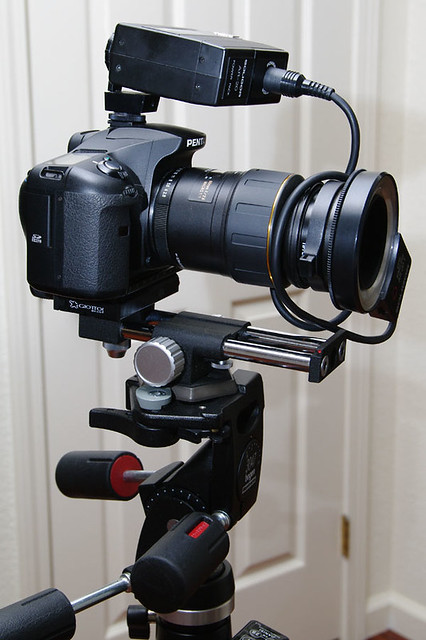 Originally posted by Nass
Originally posted by Nass 
Just curious, what mm value would you theoretically need to set SR at for say 50 reversed onto 100 (2:1)? I appreciate it might not be effective but even breathing gives me a wobbly image so this must be worth at least testing - anyone have an idea/equation?
Here's the simple math of what's going on - two equations are involved
(thin lens approximation)
image.distance = focal.length(1+m)
m is magnification Lens extension
When the image.distance = focal length, m=0. Now say you increase the image distance to focal.length + extension:
focal.length + extension = focal.length(1+m.extended) or:
m.extended = extension/focal.length Lens stacking:
Another way to change magnification is to change focal length but not image distance.When lens f' is stacked onto lens f a new lens is formed with a new focal length f"
f" = f'f/(f+f' -d)
where d is the spacing between the two lenses, usually assumed to be zero.
say an original lens f is focused at infinity so its image.distance= f then we stack on another lens f' to make a new lens f"
image.distance = f = f"(1+m.stacked) or after some algebra:
m.stacked = (focal.length.original-d)/focal.length.stacked Combined extension and stacking:
If the original lens is extended and a second lens is stacked, macro properties change like this;
(1+m.total) = (1+m.extended)(1+m.stacked)
image.distance = focal.length.original(1+m.extension)
f-stop.effective = f-stop.original(1+m.extension)
SR setting 

 Similar Threads
Similar Threads 




 Now what I'm finding is just how difficult it is to hold the camera steady when getting soooo close to a subject. I'm guessing SR doesn't work when putting a lens on backwards? I never tried it, but was figuring it probably doesn't work when in reverse with a lens.
Now what I'm finding is just how difficult it is to hold the camera steady when getting soooo close to a subject. I'm guessing SR doesn't work when putting a lens on backwards? I never tried it, but was figuring it probably doesn't work when in reverse with a lens.

















